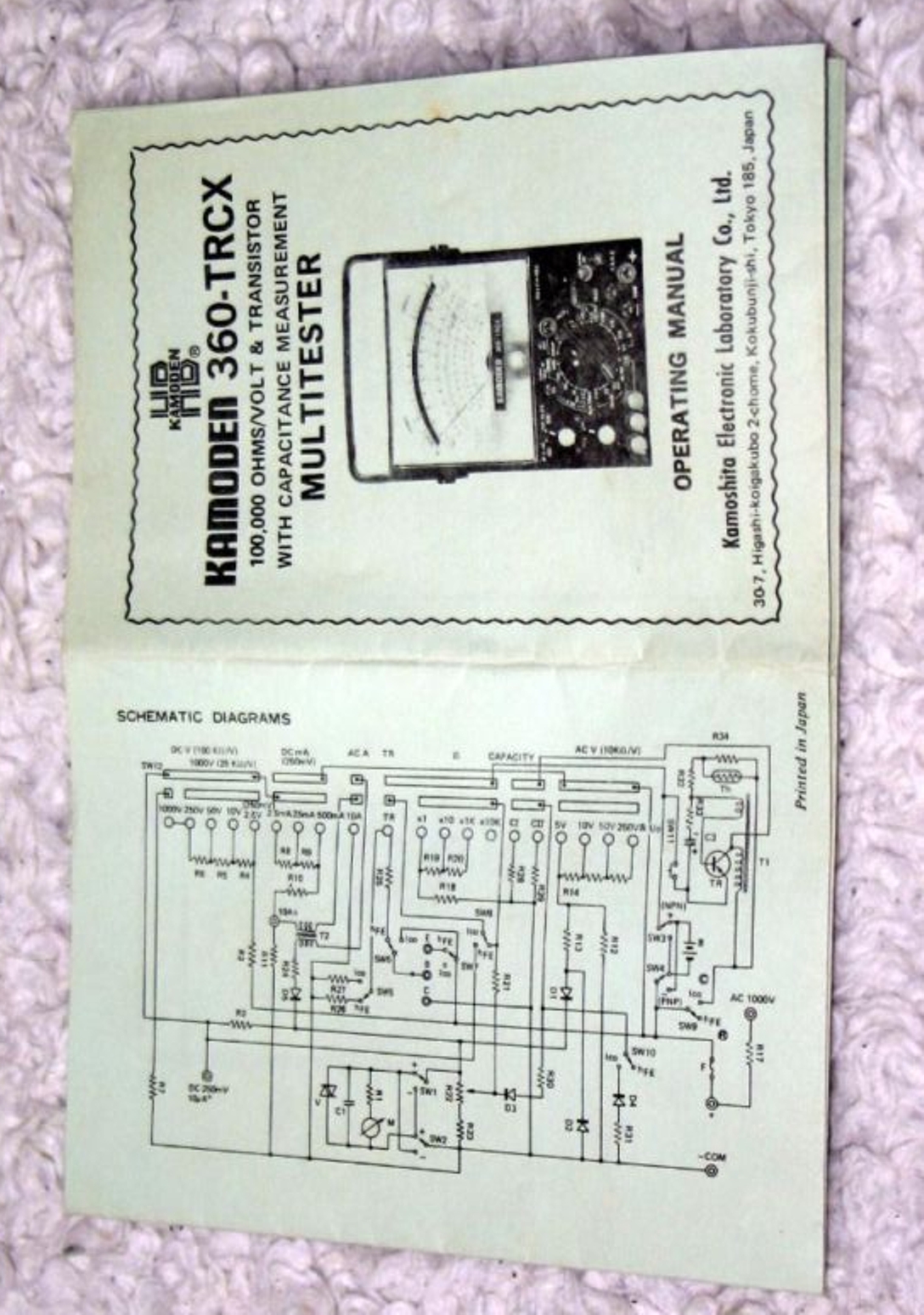KAMODEN 360 TRCX MULTEMETER
Variations:
-
360. Multimeter only
-
360-TR. Multimeter with transistor tester.
-
360-TRCX. Multimeter with transistor tester and capacitor tester.
This multimeter is one of the very rare non-electronic analog types, based on a 10uA Panel meter. On first sight, when you see thos on Ebay, it's like some old junk analog multimerer. This is nice for you, as there are very little bidders. But... we have an intrument here, as rare as can be. Try to buy a new made 10uA panel meter somewhere. You won't find those any more.
Normal, good analog meter are based on a 50uA meter, and such meters end up being 20.000 Ohms per Volt. The Kamoden 360 has a five time lower load on the circuit, and will be 100.000 Ohms per Volt. With the meter set on 1000V DC, this means an amazing 100 Meg Ohms. Same as most electronic meters, and for that the Kamoden needs no battery.
Low Current measurements. This is what I use the Kamoden for. In the case you want to measure very low DC current, like 1uA, the Kamoden will indicate that with 10 divisions, so steps of 100nA, (NANO!) and these steps re large enough to get 50nA resolution. That will outdo the resolution of many electronic meters. Not bad! Besides I have great trust in just a normal analog meter, and I have very little trust in something electronic with 50nA DC resolution. You access the 10uA option via a separate banana plug, which is just a direct access to the panel meter. So you can't set the multimeter to 10uA by mistake, the lowest range via the rotation knob is 2.5mA.
Low Resistance measurements. The Kamoden is very good here. Just take your digital meter, and connect the probes to each other. That will not indicate 0 Ohms. Reason is, you are measuring the probe wire resistance which is 0.2 Ohms or so, and there is often no "set to zero" option. You do get "zero" Ohms with the Kamoden, and the resolution is 0.2 Ohms. So when I measure an exact 1 Ohms resistor on the Kamoden, that's what it reads: 1.0 Ohms. Whereas a digital meter useually shows you 1.2 ohms (due to probe wire resistance). So I don't have to tell you here what result is more reliable.
For the rest it features a nice ransistor tester, which is dynamic. So hfe is measured with an AC signal, which is the better way.
The Capacitor meter is better than nothing, and it works good, but resolution and convenience of a digital meter is better.
